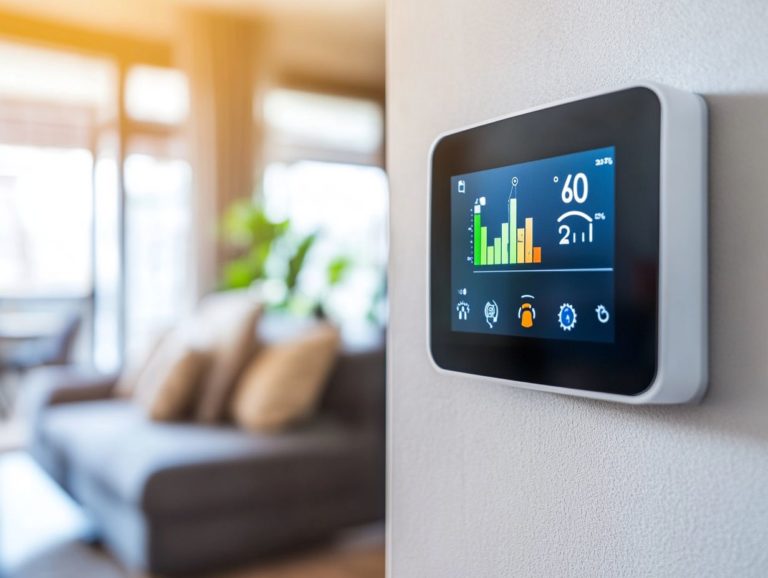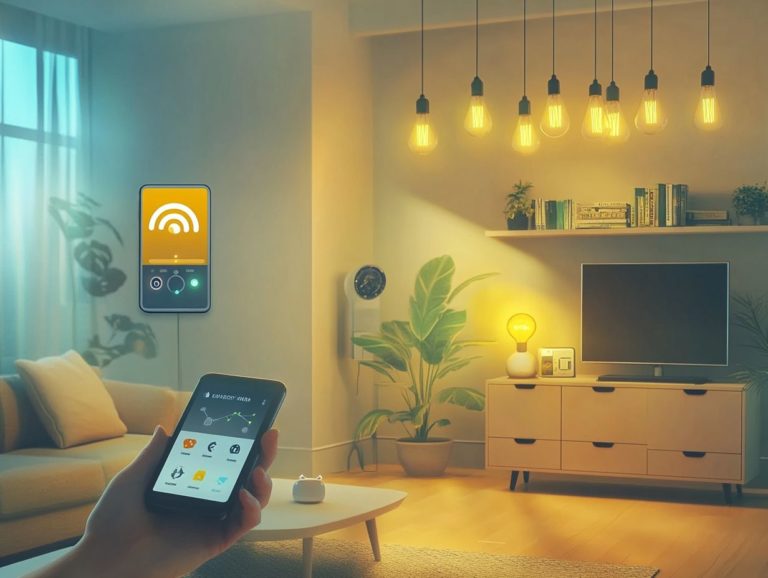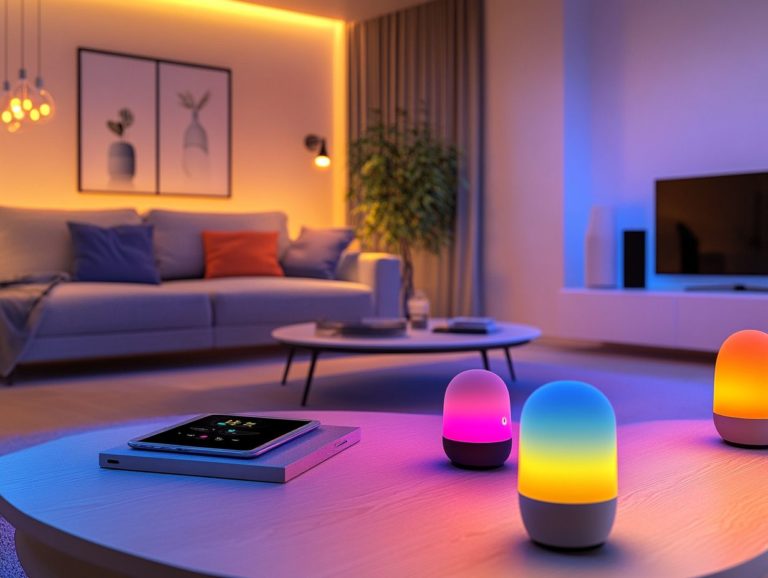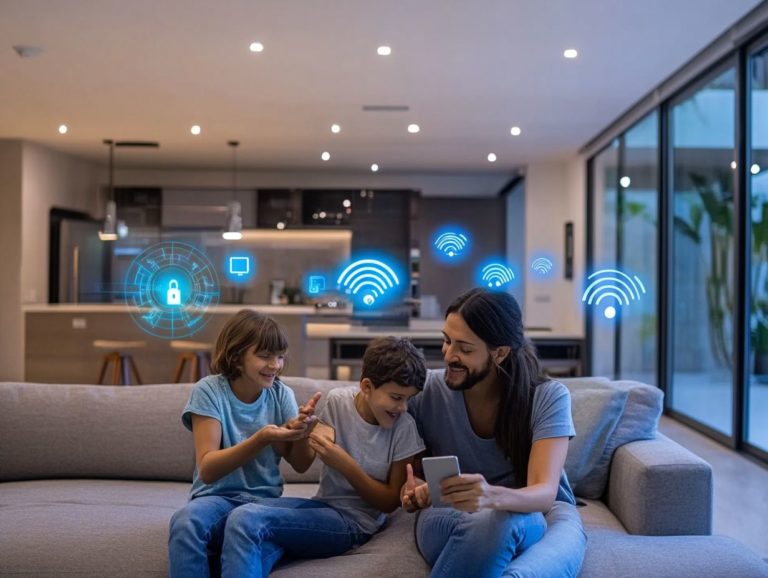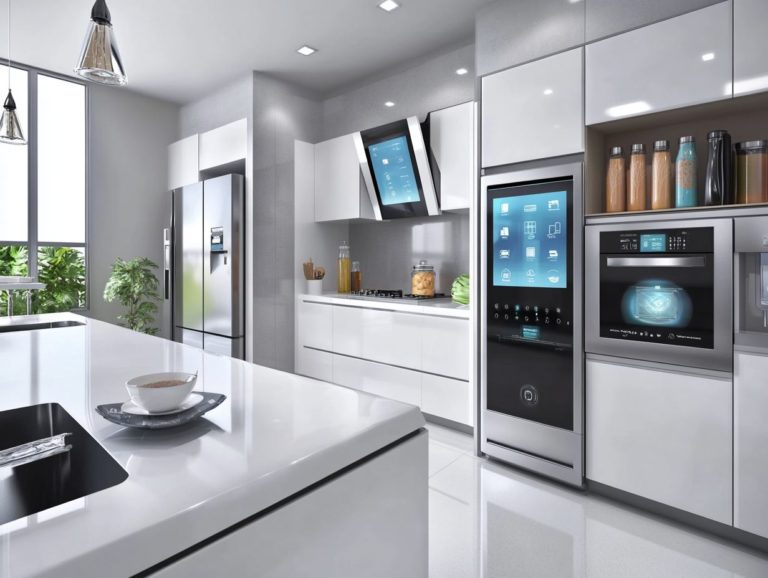Smart Home Security: Energy-Efficient Solutions
In today s fast-paced world, your need for safety and efficiency in your home is more pressing than ever. Smart home security systems are revolutionizing the way you protect your living spaces while enhancing convenience and energy savings through advanced smart home technology.
With intelligent lighting, smart thermostats, advanced security cameras, and motion sensors at your fingertips, these solutions not only safeguard your home but also simplify your daily tasks.
This article delves into various smart home security options, highlighting their benefits and offering insights on how to choose the right system tailored to your needs.
Discover how smart devices can transform your living environment into a more secure and energy-efficient haven!
Contents
- Key Takeaways:
- 1. Smart Lighting
- 2. Smart Thermostats
- 3. Smart Locks
- 4. Smart Security Cameras
- 5. Motion Sensors
- 6. Smart Smoke and Carbon Monoxide Detectors
- 7. Water Leak Detectors
- 8. Video Doorbells
- 9. Smart Garage Door Openers
- 10. Remote Monitoring and Control
- 11. Increased Energy Savings
- 12. Enhanced Home Security
- 13. Convenience and Accessibility
- 14. Potential Cost Savings
- 15. Potential Privacy Concerns
- How Can Homeowners Choose the Right Smart Home Security System?
- Frequently Asked Questions
- What is Smart Home Security and how does it relate to energy efficiency?
- What are some energy-efficient solutions offered by Smart Home Security systems?
- Can Smart Home Security save me money on my energy bills?
- How does Smart Home Security improve home safety and energy efficiency at the same time?
- Is it difficult to install and use Smart Home Security systems?
- Can Smart Home Security systems be integrated with other smart home devices?
Key Takeaways:
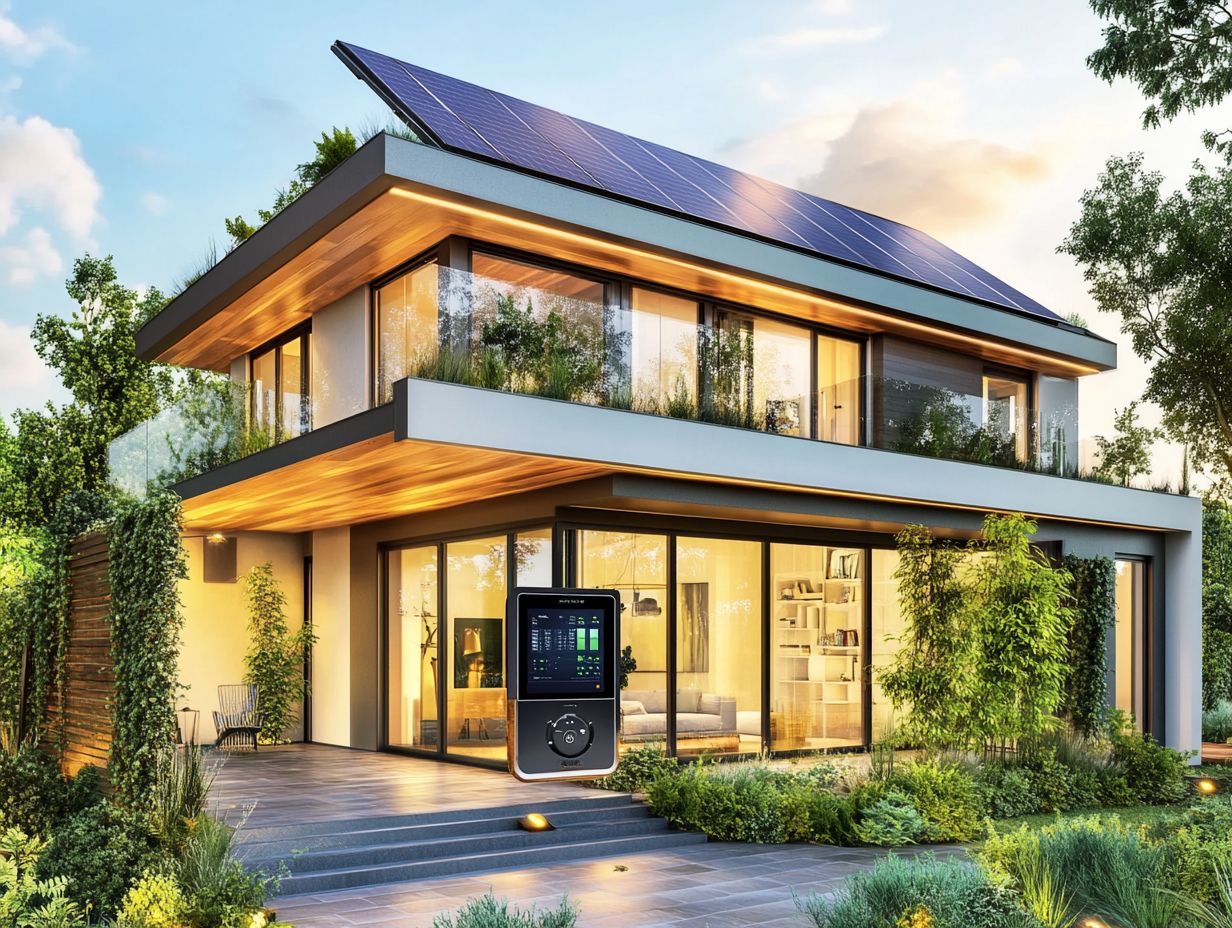
- Smart home security systems offer increased energy savings by utilizing energy-efficient solutions such as smart lighting, thermostats, and motion sensors.
- These systems enhance home security by providing remote monitoring and control, video doorbells, and smart locks.
- Homeowners should consider the types of smart home security systems available, key features to look for, and integration with other devices when choosing the right system.
1. Smart Lighting
Smart lighting systems are transforming the way you illuminate your home. They offer energy-efficient solutions that cut down on energy consumption while integrating convenience and automation through smart devices.
A variety of smart lighting technologies are driving this change, including adaptable LED bulbs that let you adjust brightness and color temperature with ease. You can effortlessly create the perfect ambiance!
Smart plugs can turn your conventional lamps into smart devices, giving you the flexibility to control your lights right from your mobile app. Automated scheduling features allow you to set lighting patterns that sync with your daily routine, boosting both security and convenience.
Premium smart lighting products like Philips Hue and LIFX excel in compatibility with major systems such as SmartThings and Zigbee. This makes it easy for you to integrate them into your existing setup as you join the smart home movement today!
2. Smart Thermostats
Smart thermostats play a crucial role in contemporary home automation, giving you the power to optimize your Heating, Ventilation, and Air Conditioning (HVAC) systems for both energy efficiency and more comfortable temperatures.
These devices learn your user habits and automatically adjust temperatures based on detecting when people are in the room and remote control capabilities. You can easily manage your heating and cooling systems from your smartphone or tablet!
This ensures a comfortable environment even when you’re not at home. With automated scheduling features, you can set temperature preferences that align with your daily routines, significantly cutting down on energy waste.
Many models, including those from trusted brands like NEST and ecobee, integrate seamlessly with existing HVAC systems. By investing in these energy-efficient appliances, especially those boasting ENERGY STAR certification, you can enjoy reduced utility bills, contribute to sustainability, and achieve a smaller carbon footprint.
Ready to secure your home with smart technology? Explore your options today!
3. Smart Locks
Smart locks transform your home security! Enjoy keyless entry options and control access to your property directly from your smartphone through IoT technology (Internet of Things), voice commands, and automatic controls that integrate effortlessly with your other smart home devices. This showcases the importance of device connectivity in smart ecosystems.
These cutting-edge locks come in various types, each boasting unique security features tailored to your needs. Some models utilize biometrics, while others use Bluetooth or Wi-Fi. This gives you the power to monitor and manage access from virtually anywhere.
Renowned brands like August and Samsung have crafted smart locks that integrate seamlessly with your existing smart home systems, enhancing both convenience and security. By pairing these locks with security cameras, smart appliances, and alarm systems, you can establish a comprehensive security solution that not only safeguards your home but also streamlines your daily activities through intelligent automation, contributing to smart home energy management.
4. Smart Security Cameras
Smart security cameras provide peace of mind. You can monitor your property in real-time and integrate them with other smart home solutions for efficient energy monitoring, contributing to overall energy savings.
These sophisticated devices often feature motion detection, sending you alerts whenever unexpected movement is detected, ensuring you remain aware of your surroundings at all times. Many models come equipped with night vision capabilities, allowing for clear video capture even in low light, thereby providing an added layer of security.
With cloud storage options, you can easily save and review footage from anywhere, making it incredibly convenient. Popular choices like Ring and Arlo seamlessly integrate into your existing smart home ecosystem, simplifying security management and enhancing both convenience and safety in your daily life.
5. Motion Sensors
Motion sensors are essential components of smart home ecosystems, adeptly detecting movement and automating actions to enhance both energy efficiency and home security. These devices work seamlessly with automated control systems and smart technology that respond to occupancy, making your living environment smarter and more responsive while maximizing energy efficiency.
Imagine a home where lights flicker on only when rooms are occupied, ensuring that energy is not wasted. This integration with smart lighting solutions minimizes unnecessary energy consumption. Their capabilities extend to security systems as well, delivering real-time alerts whenever movement is detected in key areas, thus bolstering your home’s safety. To further enhance your home’s efficiency, explore how to make your home more energy efficient.
Collaborating with other smart appliances, such as thermostats or automated blinds, motion sensors craft an environment that adapts to your actual usage patterns. This synergy not only cultivates a more comfortable living space but also champions sustainable practices by reducing waste and optimizing energy use. Additionally, learning about how smart home solutions contribute to a greener planet can further enhance your eco-friendly efforts.
6. Smart Smoke and Carbon Monoxide Detectors
Smart smoke and carbon monoxide detectors boost your home safety to new heights by delivering real-time alerts and remote monitoring capabilities. With IoT technology and automated control features, you ll be promptly notified of potential dangers, enhancing your peace of mind.
Beyond immediate notifications, these sophisticated devices often come equipped with self-testing capabilities, allowing them to routinely assess their functionality without any need for manual checks. They effortlessly connect with your existing smart home systems, giving you the power to establish a cohesive safety network that you can manage from a single smartphone app.
This interconnectedness enhances safety with seamless communication between devices. You can monitor and control related appliances based on safety events, elevating your home automation experience to a whole new level.
7. Water Leak Detectors
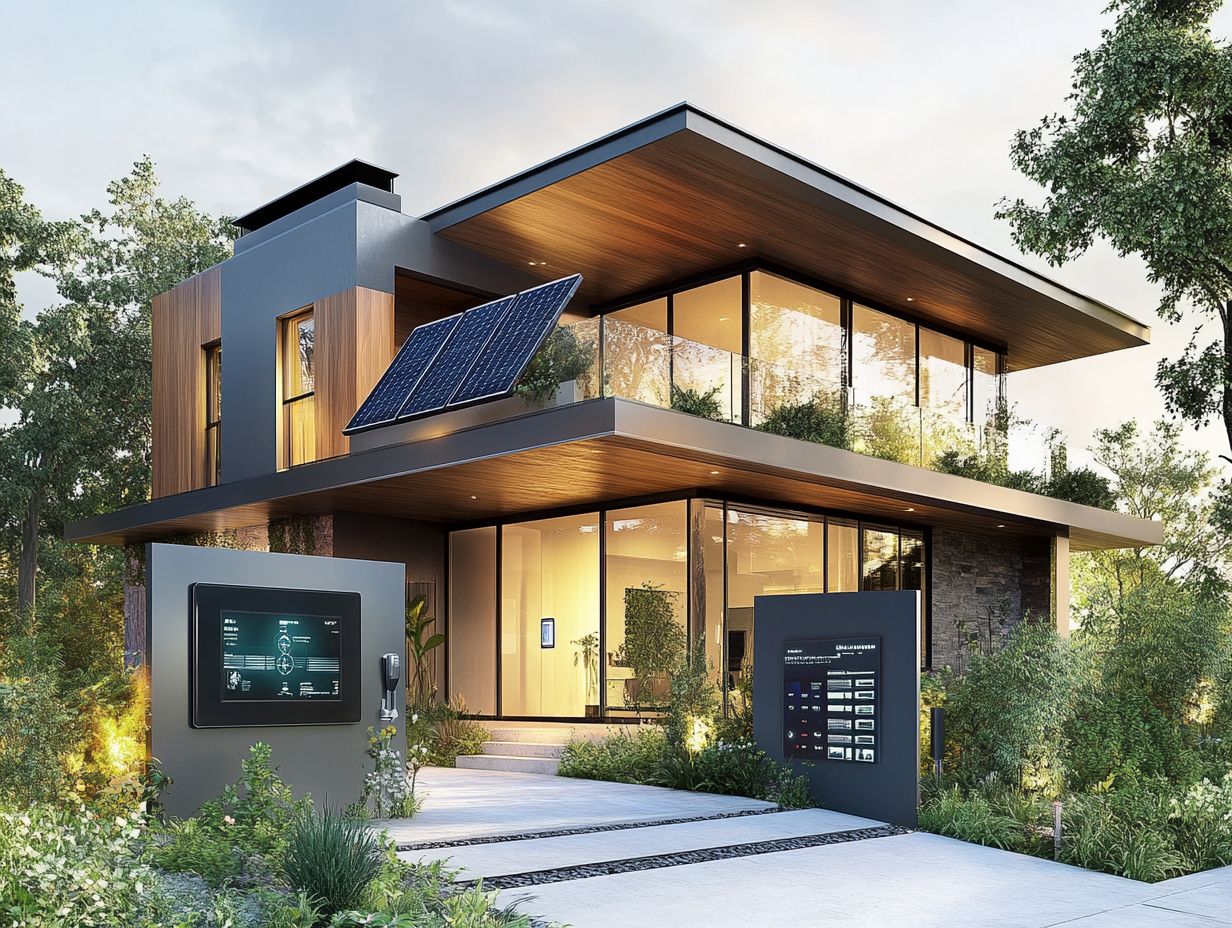
Water leak detectors are invaluable for safeguarding your smart home against costly damages. By using smart technology and automated controls, they alert you early so you can take action quickly to maintain energy efficiency and enhance home security.
These innovative devices come in various forms. You can opt for standalone units that can be strategically placed near appliances like washing machines and dishwashers, or you can choose integrated sensors that fit seamlessly into your existing smart home ecosystem, enhancing their energy efficiency.
When connected to smart home platforms, these detectors can initiate automated actions. For instance, they can shut off the water supply to an appliance at the first sign of a leak, promoting energy-saving ways to save energy and preventing unnecessary water wastage. This is part of the future of home energy efficiency solutions.
You can even schedule routine maintenance alerts, ensuring that your appliances are serviced regularly. This proactive approach not only extends the lifespan of your devices but also enhances their efficiency.
8. Video Doorbells
Video doorbells present a cutting-edge solution for enhancing your home security, providing live video feeds and two-way communication. This plays a vital role in the smart home market and gives you the power to manage access remotely, leveraging the Internet of Things (IoT) technology and seamlessly integrating with other smart home systems.
These devices not only elevate your security but also introduce a level of convenience to your daily routine, showcasing the features of user-friendly interfaces found in smart devices. With advanced motion detection, you’ll receive alerts about any movement at your door, regardless of the time of day.
Thanks to night vision capabilities, visibility in low-light conditions is ensured, making it nearly impossible for anyone to slip by unnoticed. The ability to connect with smart locks, security cameras, and other smart appliances creates a cohesive security ecosystem, allowing you to monitor and manage your home from a single, user-friendly app. For more insights, consider exploring smart home automation and energy savings, enhancing the overall home automation experience.
Market leaders like Ring and Nest dominate the landscape, each offering distinct features tailored to meet a variety of security needs and preferences.
9. Smart Garage Door Openers
Smart garage door openers elevate the convenience and security of your home automation experience, giving you the power to manage access to your garage remotely through IoT technology and automated control features.
With functionalities like remote operation, you can effortlessly open or close your garage doors from nearly anywhere using a smartphone app, granting you peace of mind even when you’re miles away from home. These devices often come with monitoring capabilities, alerting you if doors are left open or accessed without your knowledge.
When integrated with other smart home systems, your garage door opener can work seamlessly with security cameras, lighting, and alarms. This seamless coordination creates a comprehensive smart environment that not only enhances convenience but also significantly boosts your security.
10. Remote Monitoring and Control
Remote monitoring and control capabilities in smart homes give you the power to manage your devices and systems from virtually anywhere. This technology offers energy monitoring, security features, and automated control through the Internet of Things (IoT).
This capability is essential not only for protecting your property but also for optimizing energy consumption, providing you with peace of mind even when you’re away. For instance, platforms like Google Nest allow you to check security camera feeds and control smart locks remotely, while apps like Ecobee make it simple to adjust your thermostat efficiently. To learn more about how to reduce energy costs with smart tech, consider exploring this helpful guide, which can help in lowering your energy bills.
By harnessing these technologies, you can easily receive alerts for any unusual activities, manage your appliance usage, and even program your lights to mimic occupancy. This not only fosters a safer living environment but also promotes a more sustainable lifestyle by showing you how to upgrade your home for energy efficiency.
11. Increased Energy Savings
The integration of smart devices into your home can significantly enhance your energy savings. These systems utilize technologies that use less energy and smart energy management solutions to minimize overall consumption while promoting sustainability.
Take smart thermostats, for example. They allow you to schedule heating and cooling based on occupancy, leading to energy savings of approximately 10-15%. Similarly, smart lighting systems adjust brightness according to natural light levels, potentially reducing electricity usage by up to 25%. For a deeper insight into the future of home energy management with smart tech, consider how these innovations can transform your energy consumption.
A study revealed that households like yours could collectively trim their carbon footprints by an impressive 1.5 million tons annually. A case study found that 65% of participants enjoyed lower utility bills within the first year, underscoring the real-world advantages of adopting these energy-saving strategies!
12. Enhanced Home Security
Implementing smart devices in your home security system significantly elevates your safety by offering advanced features like automated control, remote monitoring, and seamless integration all powered by IoT technology.
You will gain from smart locks that provide keyless entry and remote locking capabilities, allowing you to enjoy peace of mind even when you’re away. Security cameras equipped with real-time alerts and high-definition video ensure you can keep a vigilant eye on your property at all times.
Adding motion sensors strengthens your security by sending immediate notifications whenever unexpected movement is detected. With user-friendly interfaces designed for effortless navigation, these systems empower you to take control of your security while making monitoring accessible for all family members.
This collective approach to safety ensures everyone is involved in protecting what matters most.
13. Convenience and Accessibility
Smart home solutions provide you with unparalleled convenience and accessibility, allowing you to control your devices remotely and automate daily tasks through user-friendly interfaces that enhance your overall living experience.
Imagine adjusting your lighting and temperature settings simply by using your voice or a mobile app this technology seamlessly integrates into your routine. You could set the perfect mood for movie night by dimming the lights and lowering the thermostat with just a single phrase!
Smart appliances, like refrigerators that alert you when your groceries are running low or ovens that can be preheated from afar, further reduce the need for manual intervention. By incorporating these systems into your daily life, you not only save time but also enhance energy efficiency, making home management effortless and intuitive.
14. Potential Cost Savings
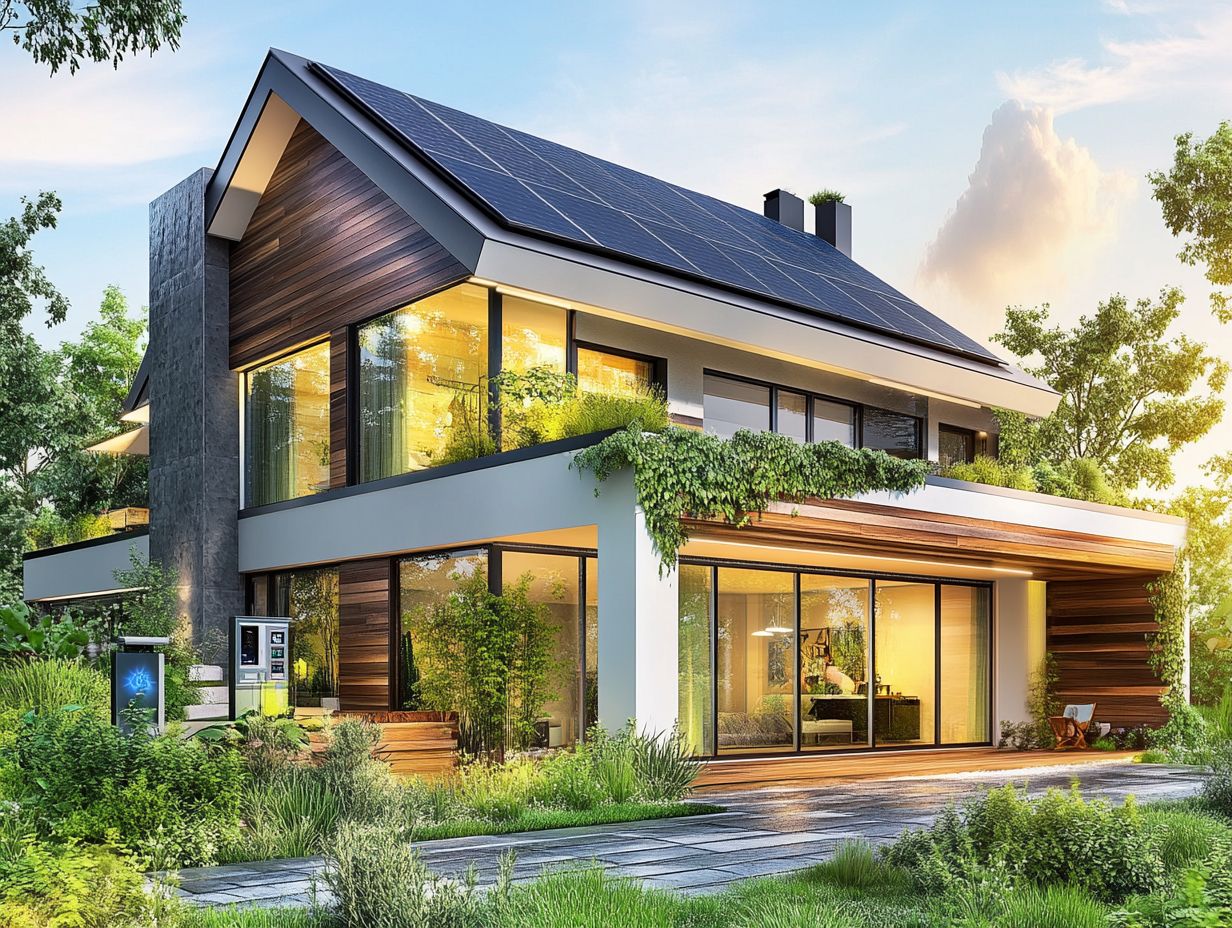
Adopting energy-efficient appliances and smart devices can unlock significant cost savings for you as a homeowner. These innovations not only reduce energy consumption but also lower the frequency of appliance maintenance.
By automatically adjusting power use based on occupancy and usage patterns, smart devices optimize energy efficiency throughout your home, translating into lower energy bills. These modern marvels often come equipped with built-in monitoring capabilities that track performance, alerting you to any irregularities before they escalate into costly repairs or replacements. Implementing saving energy with smart home devices can further enhance your home’s efficiency.
Regular firmware updates are vital in this ecosystem, ensuring your devices operate at peak efficiency and security while extending the lifespan of your appliances. Embracing these technologies not only enhances your comfort but also provides a substantial economic advantage!
15. Potential Privacy Concerns
Smart home systems offer many benefits but come with privacy concerns related to data security.
If not managed properly, Internet of Things technology can expose sensitive information.
In this landscape, ensuring robust data security is paramount. Many individuals might underestimate the vulnerabilities that accompany these advancements.
To truly protect your personal information, it s essential to adopt best practices: regularly update device firmware, use strong and unique passwords, and implement two-factor authentication.
Be mindful of common misconceptions, such as the belief that all smart devices are inherently secure. This can lead to complacency.
You can mitigate risks by being proactive utilize encryption whenever possible and be selective about which devices connect to your network.
In doing so, you ll create a safer smart environment for yourself.
How Can Homeowners Choose the Right Smart Home Security System?
Choosing the right smart home security system requires you to weigh various factors, such as compatibility with your existing devices and key features like remote monitoring.
It’s crucial to evaluate the specific functionalities that fit your lifestyle needs. Look for advanced features like motion detection, video surveillance, and automated alerts.
As a potential buyer, investigate whether these systems can seamlessly connect with other smart home devices, like voice assistants and lighting systems.
Understanding how these elements work together empowers you to make informed decisions when selecting a system that genuinely enhances your safety.
What Are the Different Types of Smart Home Security Systems Available?
You ll find a variety of smart home security systems on the market, each tailored to meet different security needs and preferences.
Whether you’re looking for comprehensive surveillance solutions or standalone products focusing on door locks or cameras, you ll find the perfect option for your needs!
Consider wireless cameras that provide real-time monitoring, easily accessible through smartphone apps, allowing you to keep an eye on your property from virtually anywhere.
Smart locks enhance your security by letting you control access electronically, featuring touchpads or fingerprint scanners for a keyless entry experience.
Alarm systems do more than just deter potential intruders; they immediately alert you with notifications if something goes awry.
Many of these products integrate effortlessly with home automation systems, enabling coordinated responses to security events and offering you peace of mind, even during your busiest days.
What Are the Key Features to Look for in a Smart Home Security System?
When selecting a smart home security system, prioritize key features like remote control capabilities, real-time monitoring, and alerts that keep you informed of any security breaches.
Motion detection technology is essential; it can identify unusual movements and send instant notifications, allowing you to stay one step ahead of potential threats.
Two-way audio enables seamless communication with anyone on your property, providing added peace of mind when you’re away from home.
Efficient cloud storage options ensure that all surveillance footage is securely saved and easily accessible, making it simple to review past events.
A user-friendly interface is crucial, allowing you to navigate settings effortlessly, while reliable device connectivity ensures that all features work together harmoniously for optimal security.
How Can Smart Home Security Systems Be Integrated with Other Smart Home Devices?
Smart home security systems can be seamlessly integrated with your other smart devices, creating a holistic home automation experience. This connection allows for automated control and enhanced security measures, all thanks to the Internet of Things (IoT), which connects devices to each other.
Imagine the convenience of smart lighting programmed to activate automatically when your security system detects motion, illuminating the way for guests or discouraging would-be intruders. Smart locks can provide you with remote access, allowing you to grant entry to trusted individuals without needing to be physically present.
When these devices communicate effortlessly, they not only boost your security but also elevate your convenience. You can monitor and control your home environment through a single app, making everything just a tap away. This cohesive integration ensures that every component works together harmoniously, delivering peace of mind and ease of use, while enabling you to personalize your settings to fit your unique lifestyle.
What Are the Common Misconceptions About Smart Home Security?
Common misconceptions about smart home security can cloud your understanding of how effective and safe these systems really are, often fueled by exaggerated fears about data security and hacking.
These myths can stir up unnecessary anxiety, making you hesitant to fully embrace technology that could greatly enhance your home s safety. For example, many people believe that smart systems are easily hackable or too complicated to manage, ignoring the strides made in encryption and user-friendly interfaces.
Others might assume that all smart devices are inherently vulnerable, failing to appreciate the crucial role of regular software updates and strong passwords. By debunking these widespread myths, you can gain a clearer perspective on how to protect your property while enjoying the convenience that smart security solutions provide.
Frequently Asked Questions
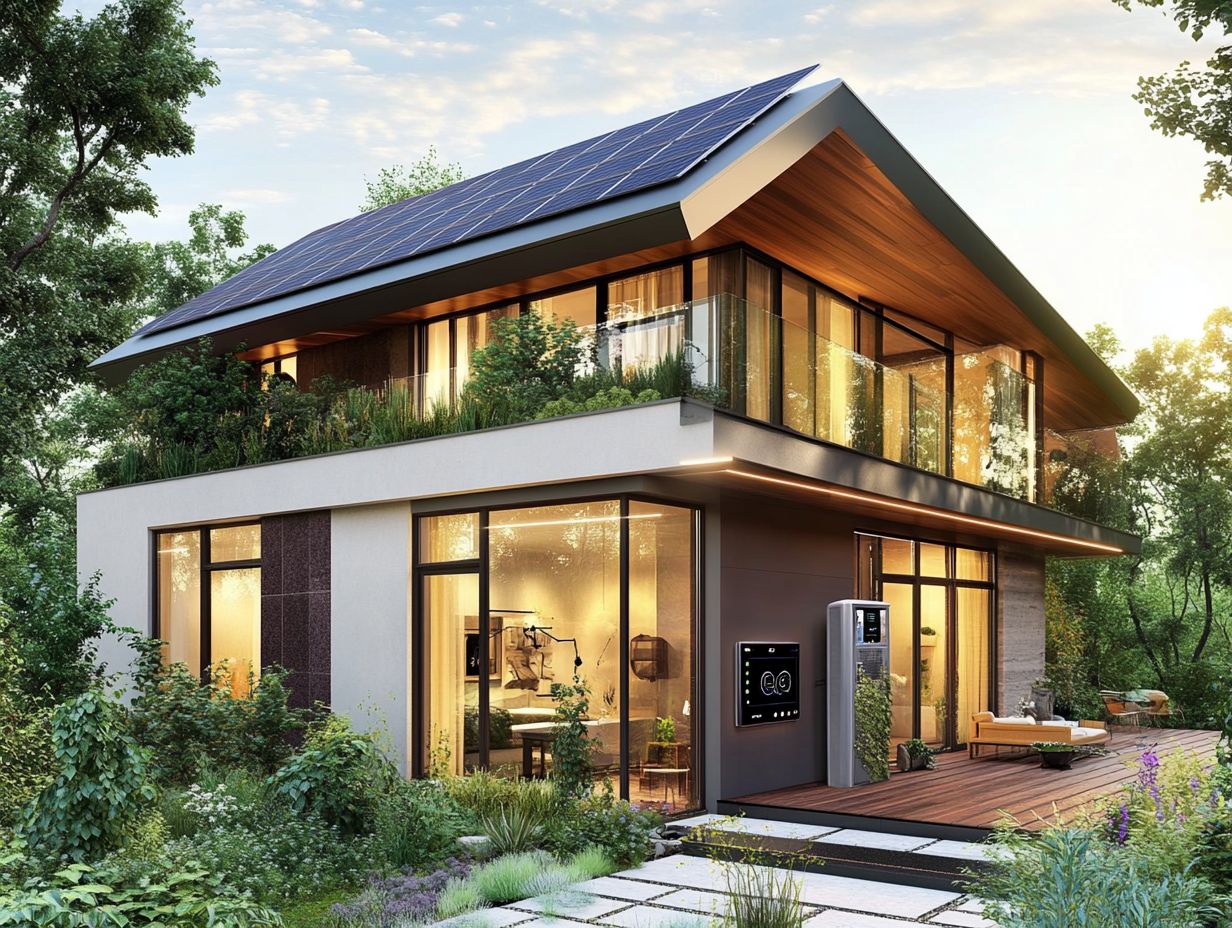
What is Smart Home Security and how does it relate to energy efficiency?
Smart Home Security is a technology that uses interconnected devices and sensors to monitor and control various aspects of home security. It relates to energy efficiency by providing solutions that can help reduce energy consumption and costs, such as automated lighting and thermostat controls.
What are some energy-efficient solutions offered by Smart Home Security systems?
Some energy-efficient solutions offered by Smart Home Security systems include:
- Automated lighting and thermostat controls,
- Energy monitoring and tracking,
- Smart plugs that can turn off devices when not in use.
Can Smart Home Security save me money on my energy bills?
Yes! By using energy-efficient solutions offered by Smart Home Security systems, you can save money on your energy bills. These systems help reduce energy consumption and costs by controlling and monitoring energy usage in your home.
How does Smart Home Security improve home safety and energy efficiency at the same time?
Smart Home Security systems use interconnected devices and sensors to detect threats and potential hazards, such as fire or carbon monoxide. By automating tasks like turning off lights and adjusting thermostats, these systems can also help conserve energy and improve energy efficiency.
Is it difficult to install and use Smart Home Security systems?
No! Many Smart Home Security systems are designed to be user-friendly and easy to install. Some systems even offer DIY installation options, making it simple for homeowners to set up and use the system without professional help.
Can Smart Home Security systems be integrated with other smart home devices?
Yes! Many Smart Home Security systems can be integrated with other smart home devices, such as smart speakers, smart locks, and smart thermostats. This integration allows for seamless control and monitoring of these devices through a central hub.
Explore the benefits of smart home security today!

